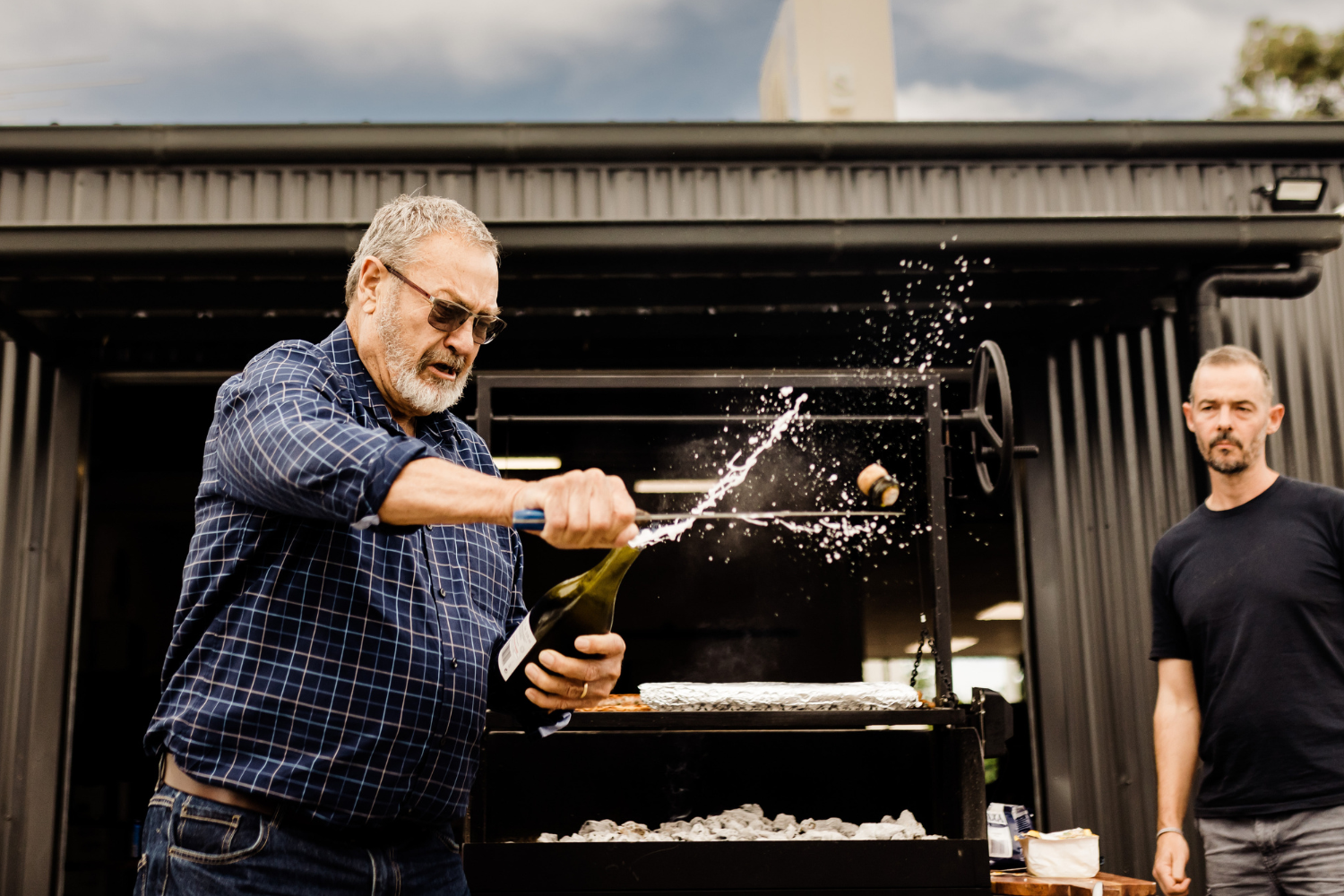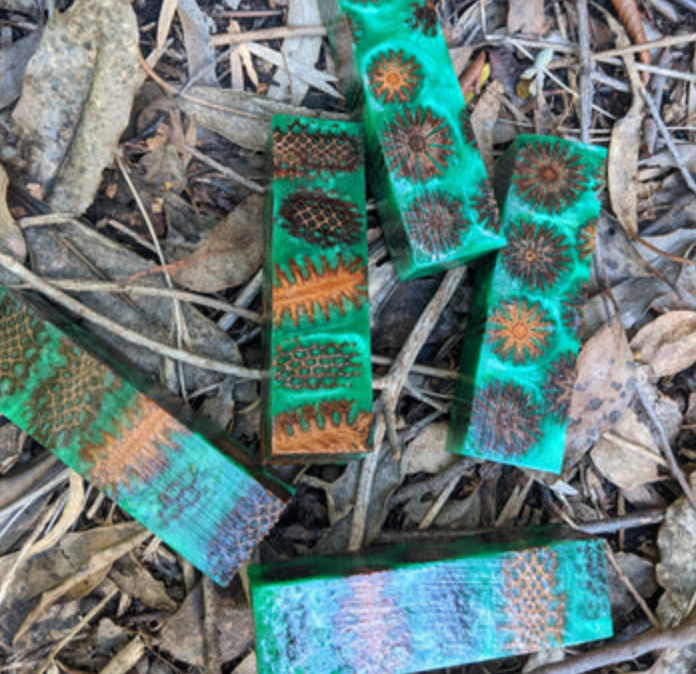Over the years we have been tinkering with different steel finishes. Whilst their are (factually) many more, to start with simplicity we have broken into the 5 Japanese steel finishes that are commonly used.
1. Polished Finish
The most common finish that you'll see in most kitchens is the polished finish. The Polished finish is often used end to end including the handle. You'll see the polished finish on common knives like global knives, furi knives, wusthof knives etc. It's the simplest knife to produce and is often used for stainless steel knives (knives with more than 12% chromium).
Pros - A nice clean polished blade gives a solid industrial look. This finish can be made in high quantities and are therefore offered with more approachable pricing.
Cons - We will often find that things being cut stick to the knife. In particular, starchy vegetables like potatoes, pumpkins or sweet potatoes become stuck and are hard to remove from the blade whilst chopping.

2. Blacksmith Finish
A blacksmith finish is admired by many as the black edge shows that forgery of the knife. After forgery and prior to commencing the cadence toward the blade the entire knife will be black. The maintenance of this black finish gives a nod of honour to original knife makers (a dwindling number).
Pros - It looks cool and gives a nod to blacksmiths. The "rough" finish also prevents food from sticking to the blade with air-pockets created on the rough edge.
Cons - Whilst a blacksmith will try to remove all dust (micro dust we can't see) from the place where the black turns into silver the micro dust remains. This often leads to corrosion on the area in between the black and the silver which can be tricky to remove.

3. Hammered Finish
Hammering dents is not as easy as it looks. Thanks the lord we now have mechanized hammers. Hammering is a current favourite as it has some advantages that are unique to the hammered knife process.
Pros - Hammered knives have a pronounced ripple effect where holes are made all the way along the blade in random locations. These holes provide air pockets that stop fruit, vegetables and whatever is being cut from sticking to the blade. hammering does another thing - it increases the compression of the steel making the entire knife harder and tougher.
Cons - When hammering you will typically need to start with a thicker spine. For people who want uber light weight knives this is tricky to do whilst implementing a hammered finish. For better or worse hammered knives (the "Ripple effect") will require a wider spine.

4. Pear | Nashi Finish
A Nashi is a Japanese pear so they both mean the same thing. This technique is similar to a hammered effect however when imposing a nashi finish we are adding more micro rippled effect. Rather than use a hammer this can be done by blasting the handle with sand to cause mini ripples which have a similar effect to hammered knives. The Pear or Nashi finish assist in preventing food from sticking to a blade and also give a look between the sand blasted section and the polished tip.
Pros - Similar to the hammered knife effect the Nashi or pear finish on steel will stop food being chopped and sliced from sticking to the blade. When done well it also looks cool
Cons - Same to the hammered effect it can, for better or worse, require a thicker spine.

5. Damascus Finish
The Damascus finish may the most loved finish at present - but it's been around a long time. A Damascus finish is somewhat complex but in simple terms we are usually referred in knives with multiple layers of steel. This finish can look almost like jewellery. The addition of nickel to one steel then removed for subsequent layers can help the contrast in between layers. To be clear much of the modern Damascus look makes little difference to the blade performance - this comes from the core steel - the steel wrapped in Damascus layers.
Pros - Used to wrap with knife core allowing knife makers to use high carbon cores (which equals harder knives) whilst protecting them Damascus layers. They also look awesome. Important to know that, other than look, the is no different between seven layer or 165 layers - then performance of the knife relates to the core - not the Damascus cladding.
Cons - Damascus is not easy to do and as a result it's more expensive.

We hope that was helpful.




